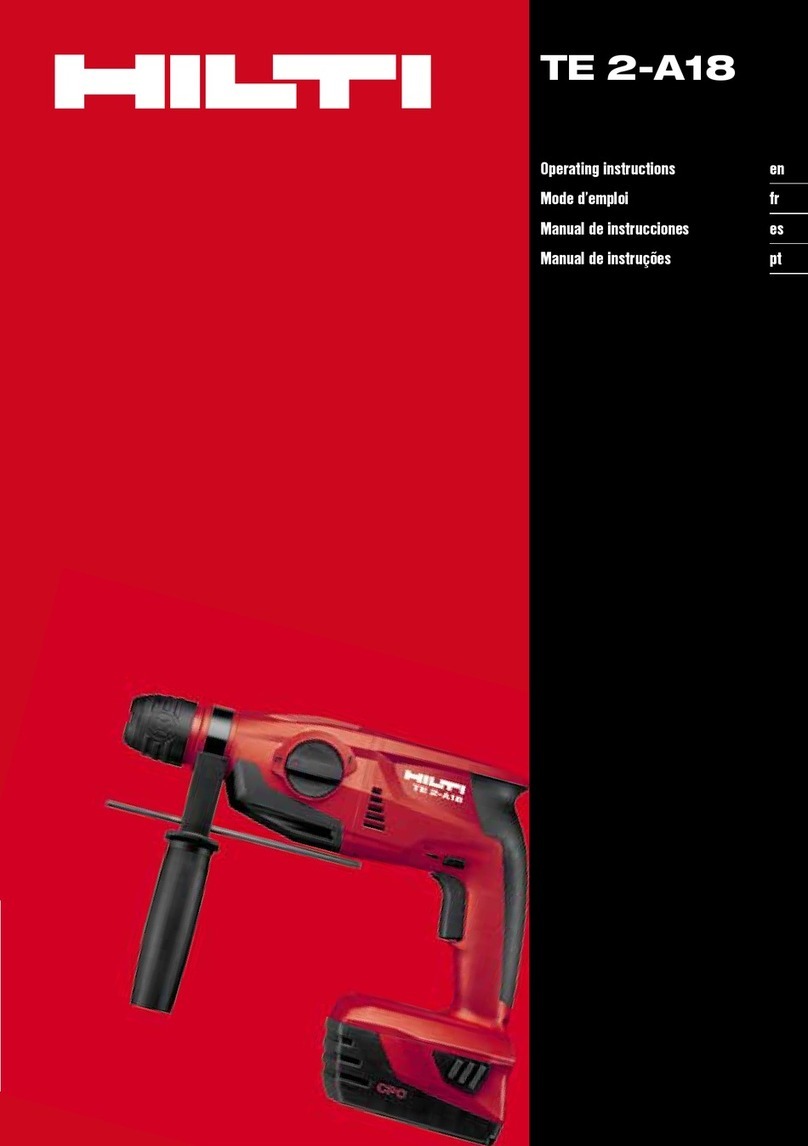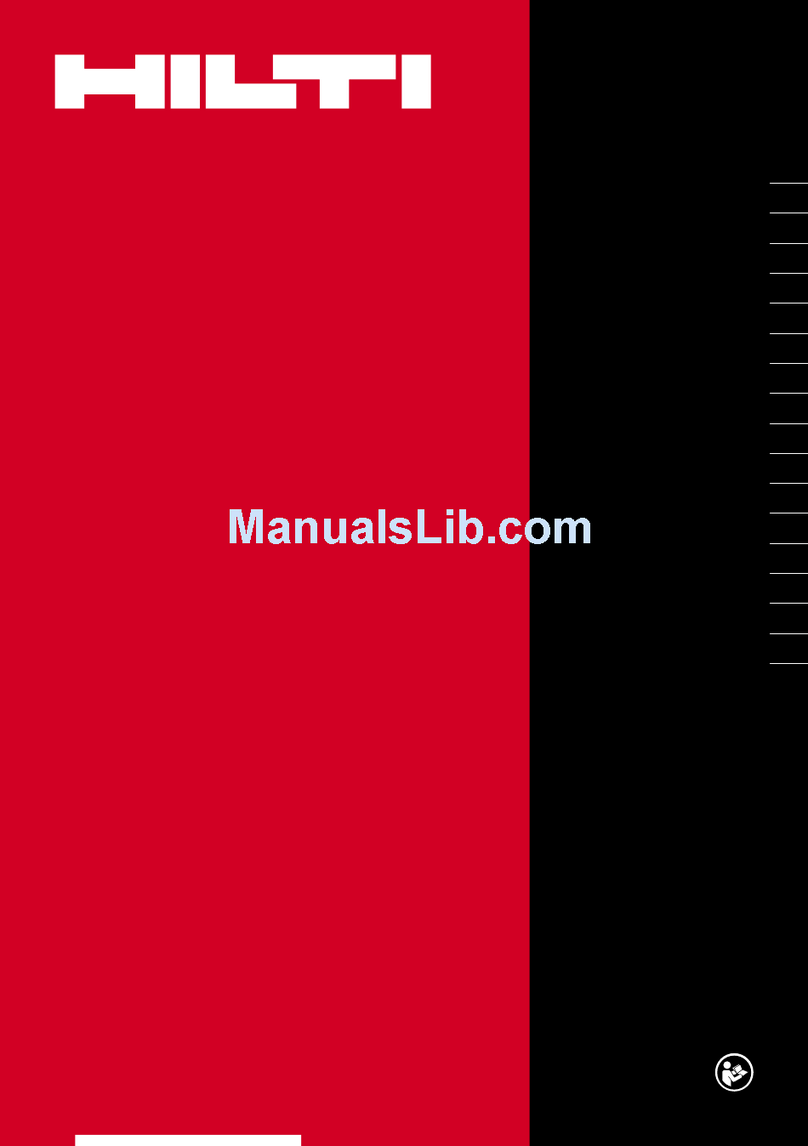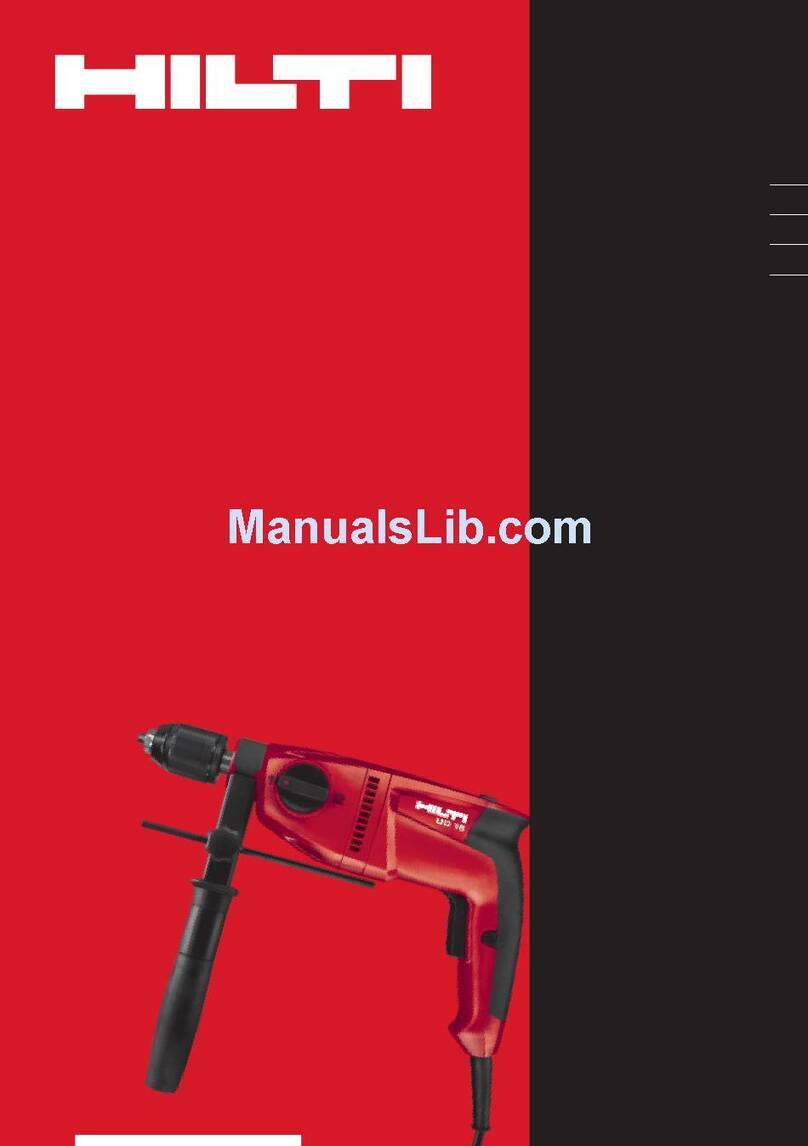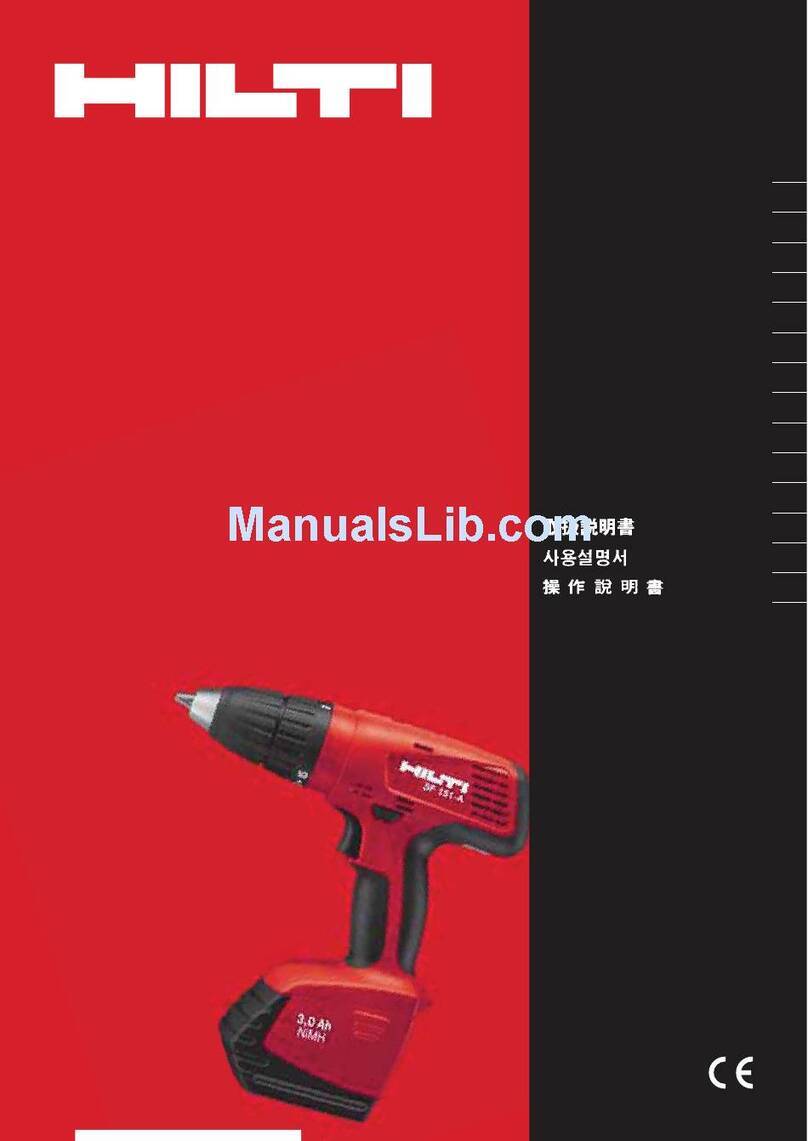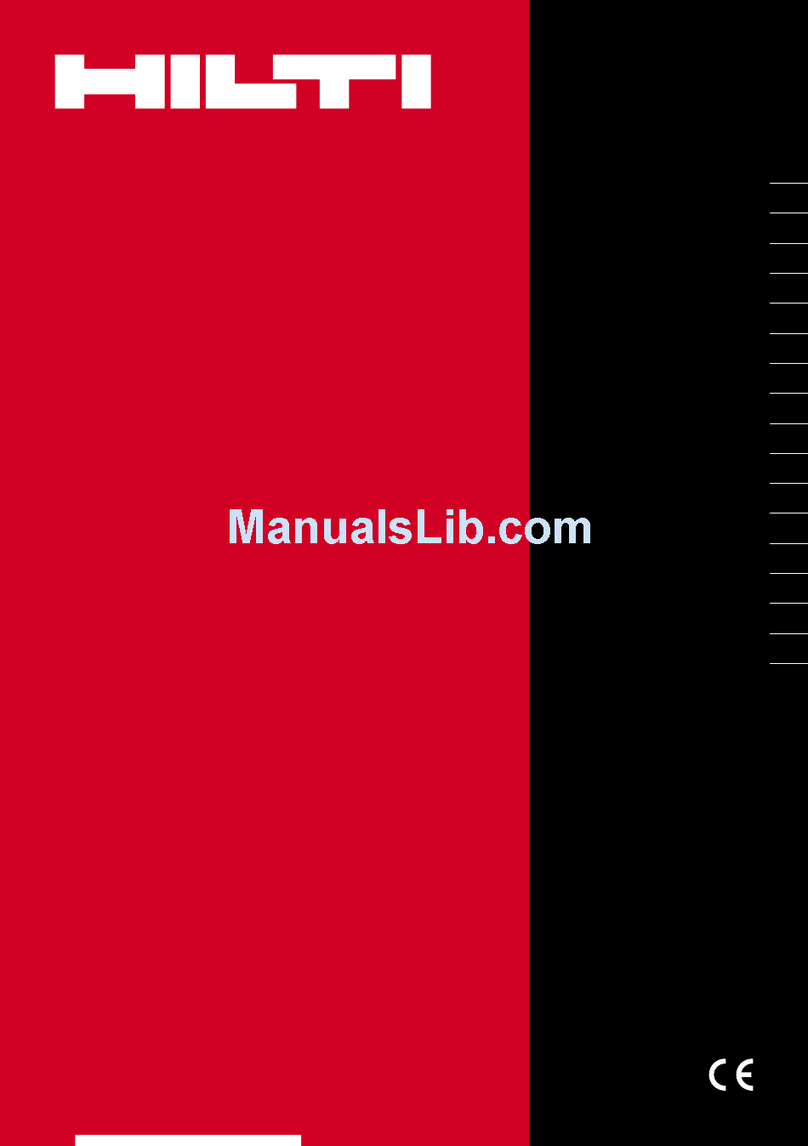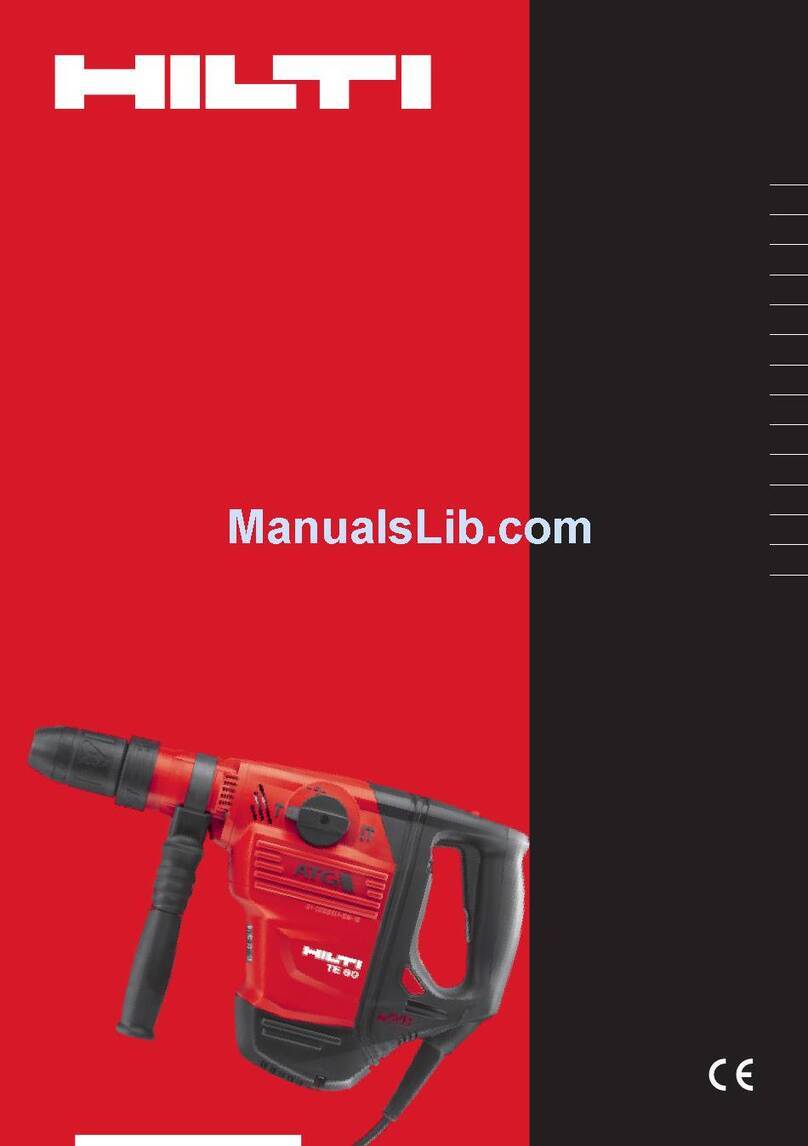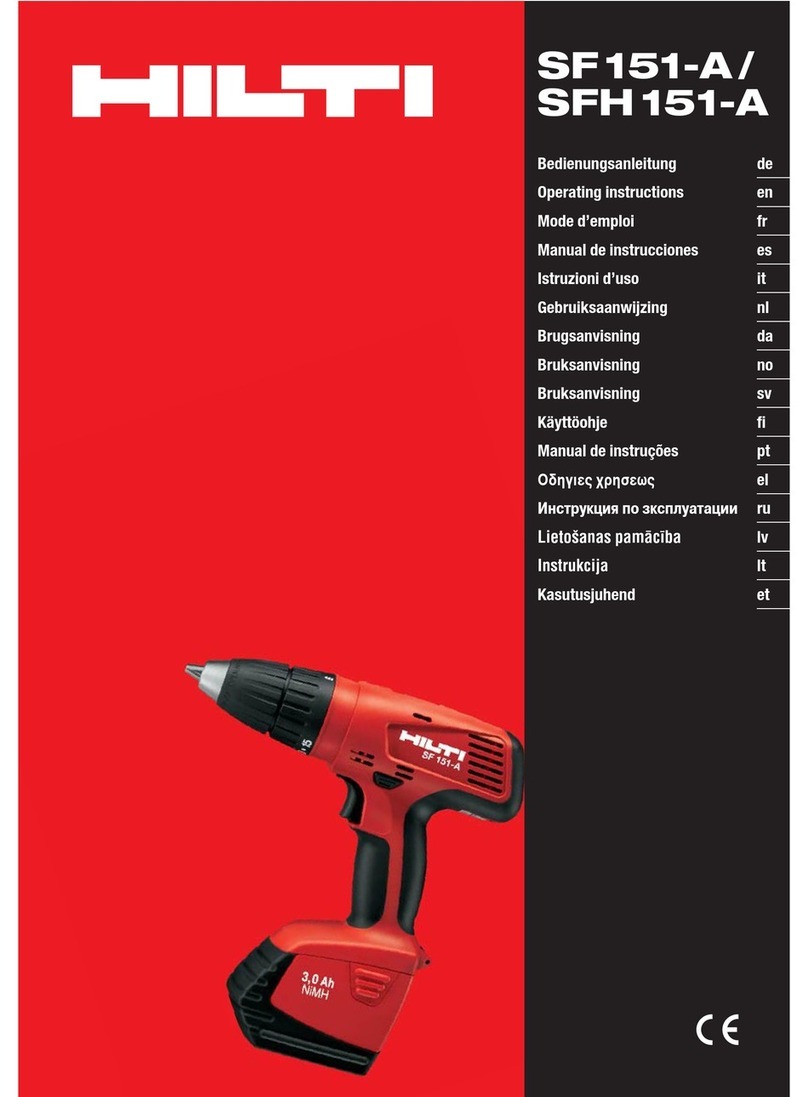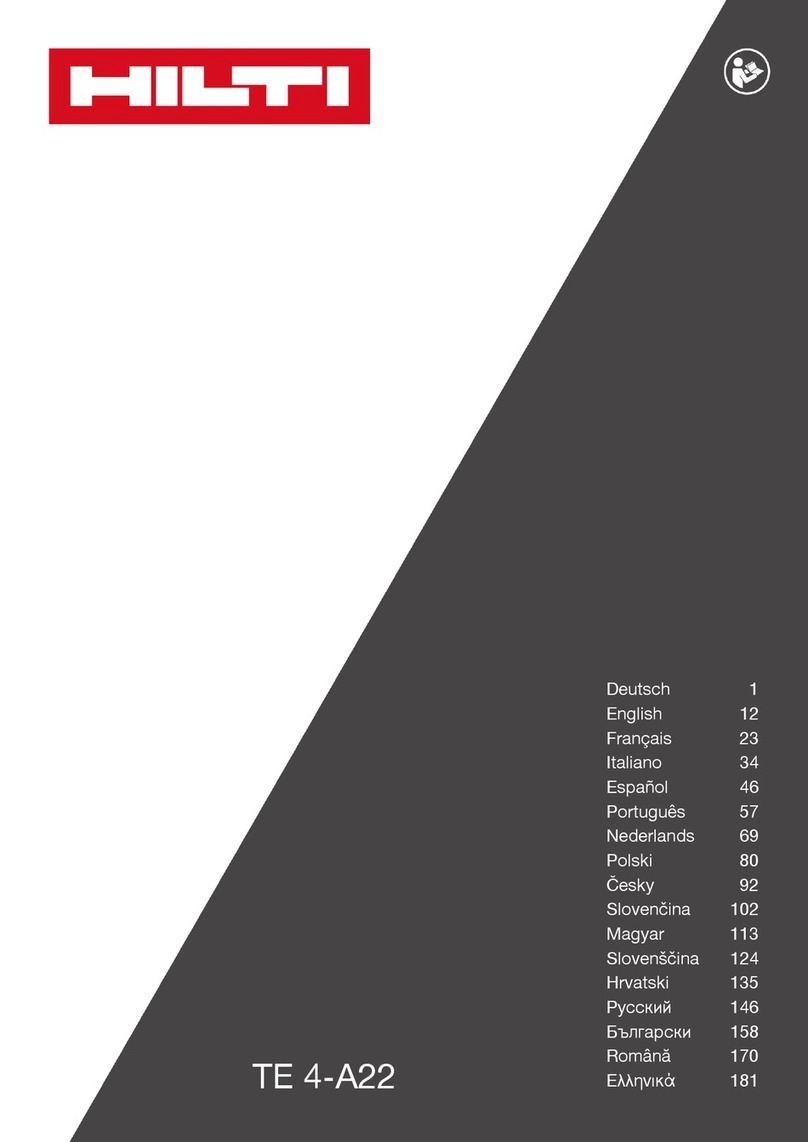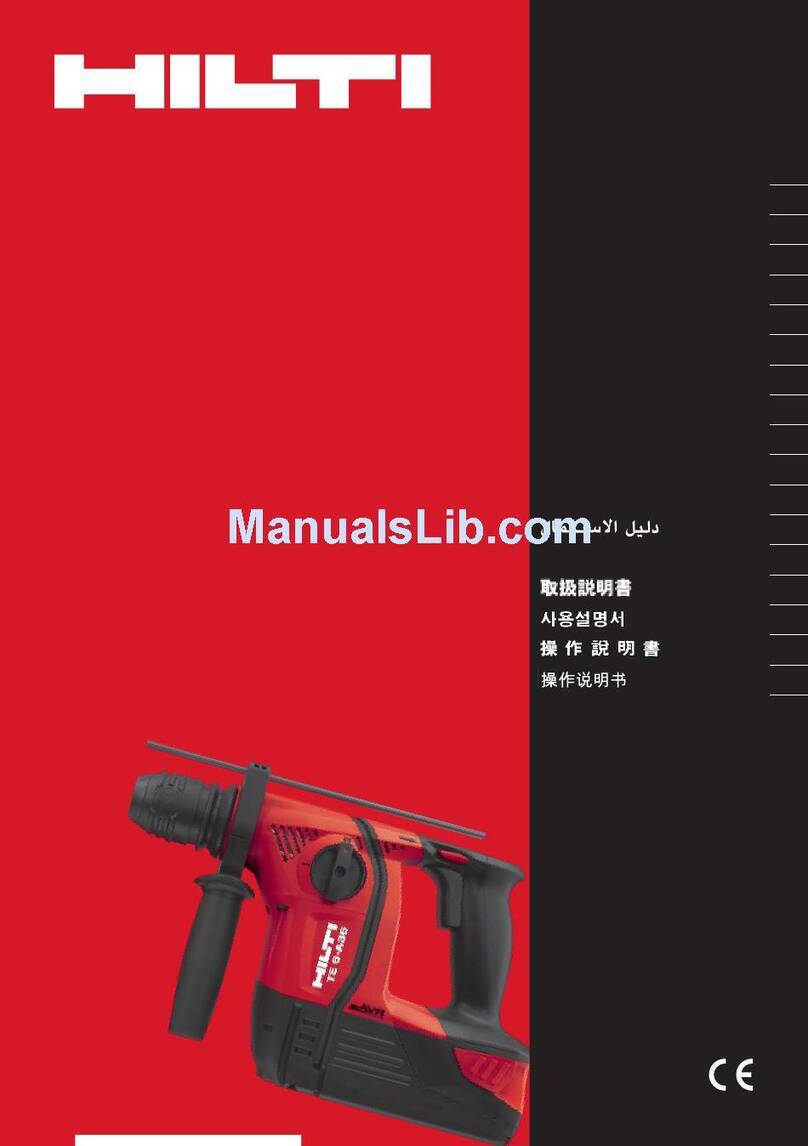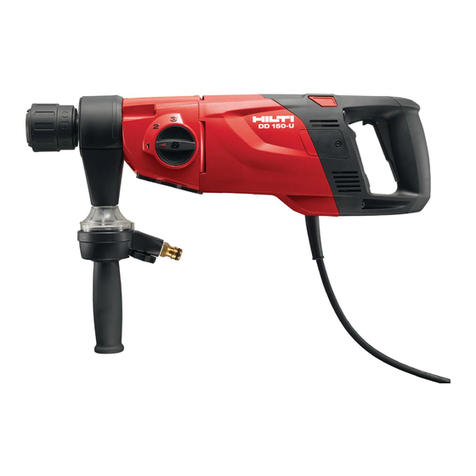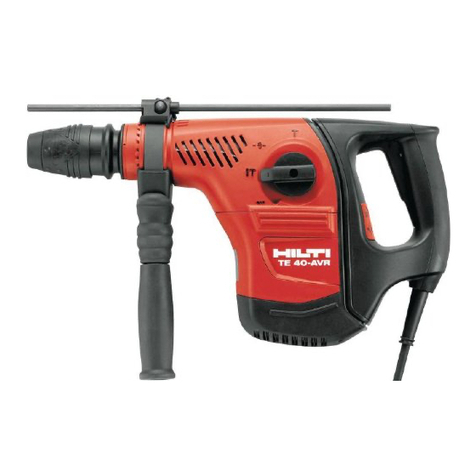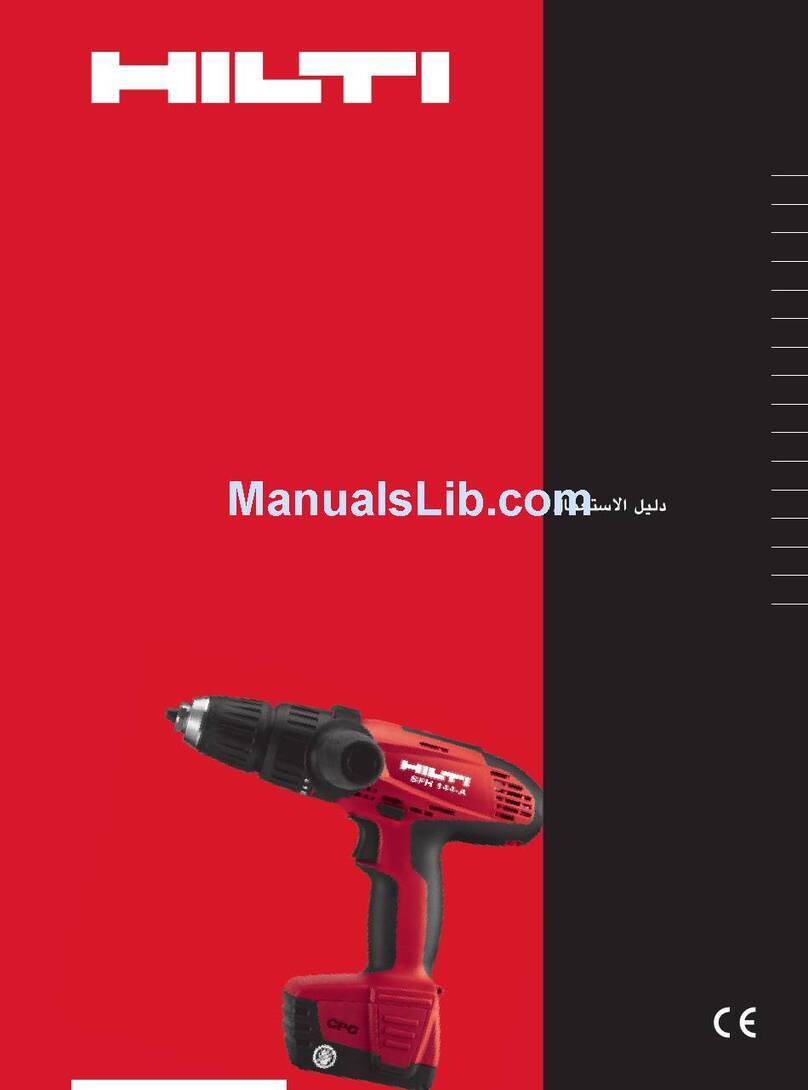19
Water entering a power tool will increase the risk of
electric shock.
d)Do not abuse the cord. Never use the cord for car-
rying, pulling or unplugging the power tool. Keep
cord away from heat, oil, sharp edges or moving
parts.
Damagedorentangledcords increase the risk
of electric shock.
e) When operating a power tool outdoors, use an
extension cord approved for outdoor use.
Use of
a cord suitable for outdoor use reduces the risk of
electric shock.
5.1.3 Personal safety
a) Stay alert, watch what you are doing and use com-
mon sense when operating a power tool. Do not use
a power tool while you are tired or under the influ-
ence of drugs, alcohol or medication.
Amomentof
inattentionwhileoperatingpower tools mayresultin
serious personal injury.
b)Use safety equipment. Always wear eye protection.
Safetyequipmentsuchas dust mask,non-skidsafe-
ty shoes, hard hat, or hearing protection used for
appropriateconditionswillreduce personal injuries.
c) Avoid accidental starting. Ensure the switch is in
the off position before plugging in.
Carrying power
tools with your finger on the switch or plugging in
powertoolsthathave the switchoninvitesaccidents.
d)Remove any adjusting key or wrench before turn-
ing the power tool on.
Awrenchora key leftattached
toarotatingpart of thepowertoolmay result in per-
sonal injury.
e) Do not overreach. Keep proper footing and balance
at all times.
Thisenables better controlof the pow-
er tool in unexpected situations.
f)Dress properly. Do not wear loose clothing or jew-
ellery. Keep your hair, clothing and gloves away
from moving parts.
Looseclothes,jewelleryorlong
hair can be caught in moving parts.
g)If devices are provided for the connection of dust
extraction and collection facilities, ensure these
are connected and properly used.
Useofthesedevices
can reduce dust related hazards.
5.1.4 Power tool use and care
a) Do not force the power tool. Use the correct power
tool for your application.
Thecorrectpowertool will
dothejobbetter and saferattherate for which itwas
designed.
b)Do not use the power tool if the switch does not turn
it on and off.
Anypowertoolthat cannot becontrolled
with the switch is dangerous and must be repaired.
c)Disconnect the plug from the power source before
makingany adjustments, changing accessories, or
storingpower tools.
Suchpreventive safety measures
reducethe risk of starting the power tool accidentally.
d)Store idle power tools out of the reach of children
and do not allow persons unfamiliar with the pow-
er tool or these instructions to operate the power
tool.
Power tools are dangerous in the hands of
untrained users.
e) Maintain power tools. Check for misalignment or
binding of moving parts, breakage of parts and any
other condition that may affect the power tool's oper-
ation. If damaged, have the power tool repaired
before use.
Many accidents are caused by poorly
maintained power tools.
f)Keep cutting tools sharp and clean.
Properlymain-
tainedcuttingtoolswith sharp cuttingedgesareless
likely to bind and are easier to control.
g)Use the power tool, accessories and tool bits etc.,
in accordance with these instructions and in the
manner intended for the particular type of power
tool, taking into account the working conditions and
the work to be performed.
Useofthepower tool for
operationsdifferentfromthose intended couldresult
in a hazardous situation.
5.1.5 Service
a) Have your power tool serviced by a qualified repair
person using only genuine replacement parts.
This
willensure that the safety of the power tool is main-
tained.
5.2 Additional safety rules
5.2.1 Personal safety
a) Wear ear protection.
Excessivenoise may leadto a
loss of hearing.
b)Use the auxiliary handle supplied with the tool.
Loss of control of the tool may lead to injury.
c)The tool may be operated only when held in both
hands or when mounted on the drill stand. Ensure
that the side handle is fitted correctly and tightened
securely. Always hold the tool in both hands when
it is in use.
d)Breathing protection must be worn when the tool is
used without a dust removal system for work that
creates dust.
e) To avoid tripping and falling when working, always
lead the sypply cord, extension cord and dust extrac-
tion hose away tho the rear.
f) Take care to avoid tripping over the supply cord,
extension cord or extraction hose.
g)Avoid skin contact with drilling slurry.
h)Ensure that the water swivel / extraction head (side
handle mount) is properly secured in position and
that the locking ring is tightened (see 6.1.3).
i) Ensure that the tool is securely attached when mount-
ed on the drill stand (see 6.9).
j) Do not touch rotating parts.
5.2.2 Power tool use and care
a) Ensure that the insert tools used are equipped with
the appropriate connection end system and that they
are properly fitted and secured in the chuck
.
b)In the event of a power faillure, switch the tool off
and unplug the supply cord.
Thispreventsinadver-
tent starting when the power returns.
c)Observe the instructions concerning care and main-
